Musical Leonardo of the Soviet military industry: from artillery systems to the world's first studio synthesizer
In our materials, we have already touched on the unique analog synthesizer ANS and its inventor Evgeny Murzin. In connection with the revolutionary principles of the device created by Murzin, anticipating the appearance of music editors and all studio synthesizers, as well as the invaluable contribution of Soviet engineers to the development of synthesizers, I decided to devote a separate article to its creator.

The 70 years that the USSR lasted is a complex and controversial period, which, meanwhile, is rich in amazing stories of inventions and discoveries. In acoustics and music there were no fewer such inventions than in heavy industry and the military industry, although the latter were much less known. One way or another, I am deeply convinced that the ambiguous attitude towards the Soviet period in the history of our country should not detract from the significance of the inventions of Soviet engineers.
In this material, the story of a talented military engineer who, contrary to a huge number of circumstances, created the world's first studio musical synthesizer. This post is about a man who, for the sake of his beloved invention, refused general epaulettes and related benefits. In a sense, this concise biography is dedicated to the endangered type of people who, in the harsh Soviet reality, managed to create unique equipment, open new horizons, were able to circumvent bureaucratic, ideological and other obstacles.
Today, any article about the history of synthesizers can not do without mentioning such names as Robert Mug, Ray Kurzweil, Milton Byron Babbitt, while Eugene Murzin is not rarely forgotten or only mentioned in passing. That is why we devote the second article of the cycle about the history of synthesizers to this person.
Evgeny Murzin was born in 1914 in Samara. After graduating from high school, the ambitious son of a weaver enters the Samara Construction College, which he graduates with honors in 1933. At this young age, Murzin becomes a music lover and shows great interest in classical music. The inquiring mind of an excellent student of the Samara technical school requires more than secondary specialized education and in 1933 Murzin entered the Moscow Institute of Public Utilities Engineers. After graduating with honors in 1938, Murzin continues his studies at the graduate school of the institute.

According to the testimony of Murzin’s daughter, already in the late 30s the inventor had the idea of creating a synthesizer. In 1936, the music lover Murzin got acquainted with the works of Alexander Nikolaevich Scriabin, and already in 1938, a synthesizer project called the ANS appeared in honor of the great composer. After graduating from graduate school in 1941, Murzin with his project turns to the Moscow Conservatory. The idea of the young inventor impresses the leadership of the conservatory, but due to its resource consumption, the creation of a prototype synthesizer does not receive support.

Unlike many inventors, Murzin, by virtue of proletarian origin, and, probably, his youth, avoided getting into the meat grinder repressions. Unlike, for example, Theremin, the inventor did not have to try the camp baland and work in the cramped conditions of Soviet sharashka. Another interesting feature is that Murzin himself at the time of creating the synthesizer project was not a radio engineer, had neither sound engineering nor music education.
Perhaps an energetic engineer could achieve approval of his development back in 1941, but the Great Patriotic War began, which for a long time delayed the implementation of the revolutionary idea of Yevgeny Murzin.
The engineer has been at the front since 1941, he served in artillery. As a gifted and versatile person, the engineer applied engineering knowledge to develop a project for an electromechanical artillery fire control system, after which he sent the draft invention to the command. Having appreciated Murzin’s innovation, the command recalls a talented engineer from the front and engages in the development of military equipment at NII-5 as a senior lieutenant technician.
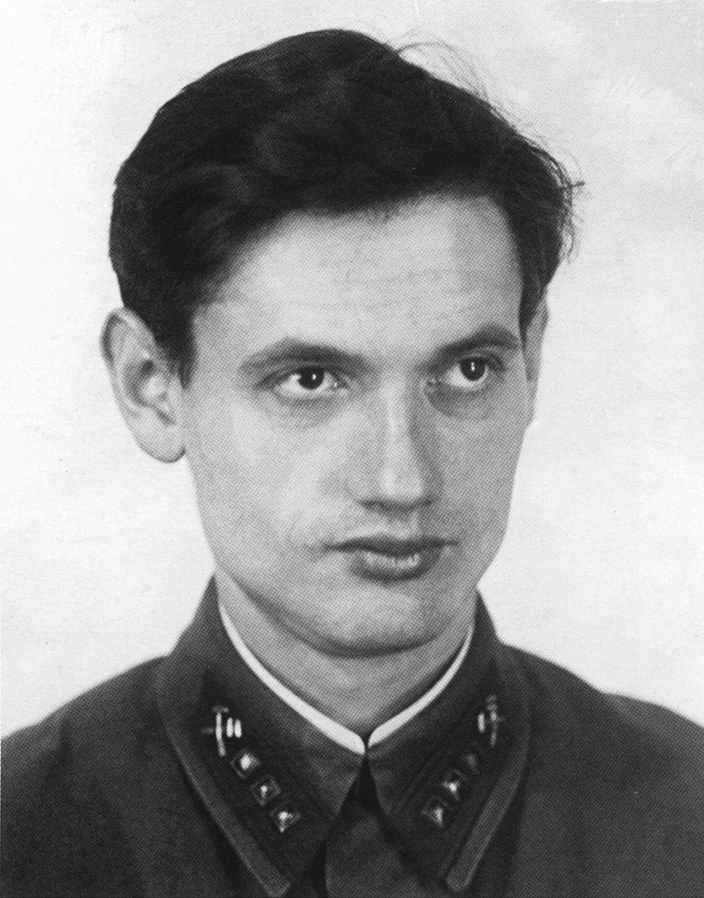
According to a friend of Murzin, composer Eduard Artemyev, the inventor said that during the war he had to analyze the features of air combat and the techniques of German pilots. As a result of this study, he was able to develop effective tactical countermeasures for anti-aircraft batteries and Soviet aviators, taking into account the patterned, typical maneuvering of German aircraft during attacks.

During the war, the engineer developed several modifications of anti-aircraft fire control devices, led their tests and launched into serial production. In 1945, at the Moscow State Technical University named after N.E. Bauman Murzin defends his thesis on the specialty of military instrumentation.
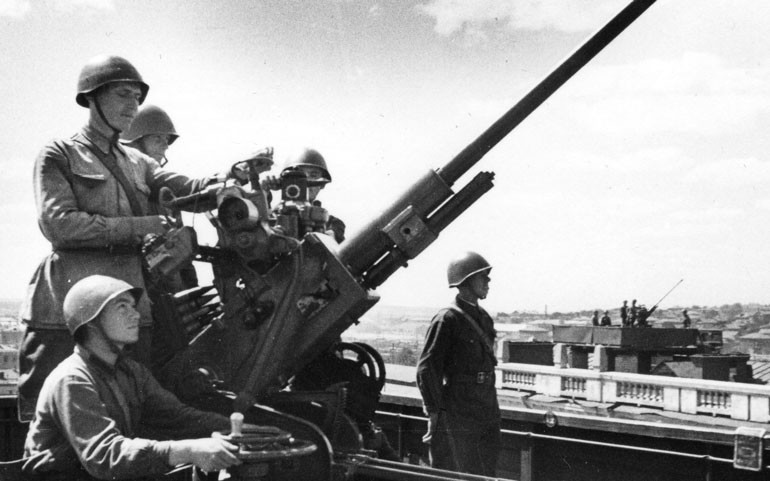
Almost all the post-war years, the engineer was actively engaged in the development of equipment for soundmetric reconnaissance of ground artillery, instrumental methods of guiding fighter-interceptors to enemy bombers. For which, according to some reports, in 1951 he was awarded the Stalin Prize. During the difficult 40s, Eugene found time to improve the design of his synthesizer . There was naturally no time left to create a prototype.
Developing artillery systems, Murzin becomes quite an influential figure, which allows him to find the resources necessary for the development of a synthesizer. There is an opinion that the first prototype of the ANS was developed at the NII-5 itself, however, the stories of relatives and friends of the engineer refute such assumptions. According to everyone who was familiar with the engineer, the prototype of the ANS synthesizer was going to be in a room in a communal apartment in which Evgeny Murzin lived. He was actively helped by soldering his wife and daughter, as well as guests, conversations with whom were often held in a rosin haze.

The inventor’s colleagues at the military research institute ironically called the ANS a balalaika, but understanding the companion’s enthusiasm for a hobby that was strange for that time, they helped to get scarce radio elements. Murzin’s high salary by Soviet standards (who reached the rank of colonel in the 50s) greatly facilitated the work on the prototype of the instrument. Understanding the value of Murzin’s military developments, the leadership of the research institute turned a blind eye to a hobby that was not quite usual for a military engineer, which he himself considered a matter of his life.
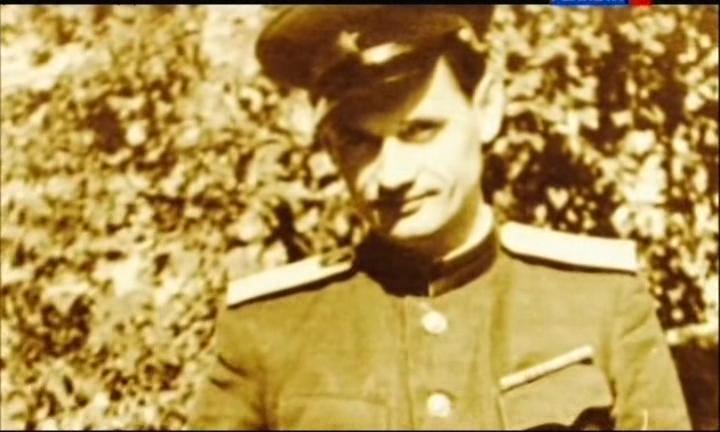
Creating a working prototype of the invention, Murzin used his own funds, as well as the help of friends who financially supported the inventor in those cases when his own funds were not enough to purchase the necessary materials, parts and elements.
By 1958, Eugene Murzin managed to complete the first prototype of the ANS. Even the first artisanal synthesizer sample had characteristics unprecedented for that time:

In addition, the synthesizer was the world's first polyphonic instrument of this type and implemented the photographic optical principle of reproduction, which has no analogues in the world. We wrote in detail about the principles of the ANS synthesizer in this article .
The finished prototype impressed composers and responsible comrades from the USSR Ministry of Culture. As a demonstration of the technical superiority of the Land of Soviets, the second prototype device with improved characteristics, created already with the active support of the USSR Council of Ministers Committee on Radio Electronics, went to technical exhibitions in London and Paris in 1961.
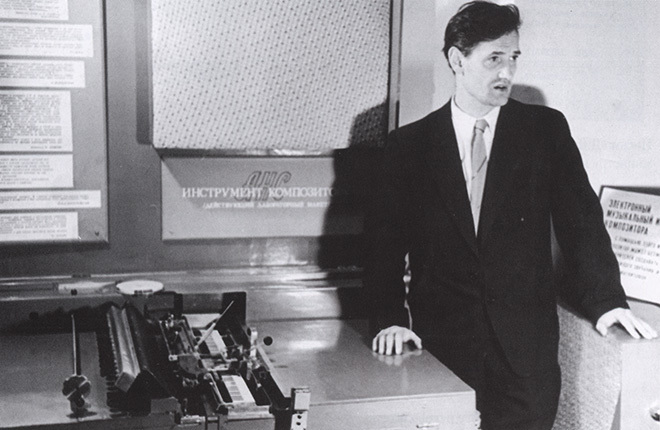
Composers instantly felt the revolutionary approach to creating music, the synthesizer made it possible to completely exclude the artist from the process of its creation, and draw sound canvases on the synthesizer plates as the author needed. Many prominent composers of that time became Murzin's associates in improving his invention, for example, Eduard Artemyev, Nikolai Nikolsky, Peter Meshchaninov, Stanislav Kreichi.
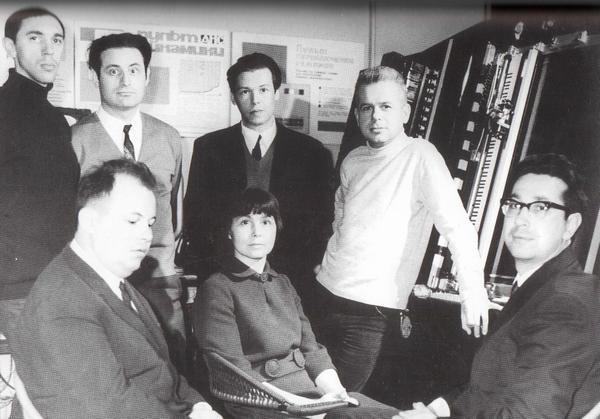
There is a well-known document drawn up in the Union of Composers regarding the synthesizer and Murzin’s initiative addressed to the Minister of Culture of the USSR Furtseva, here is his text:
It is interesting that, at the time of the creation of the laboratory, in 1967, Murzin, as the chief engineer and author of the basic principles of managing active air defense systems, successfully completed a large-scale project that promises him with a continuation of his military career (new position and rank of general) . Despite the bright prospects for career growth, Murzin goes into the reserve and selects his ANS.
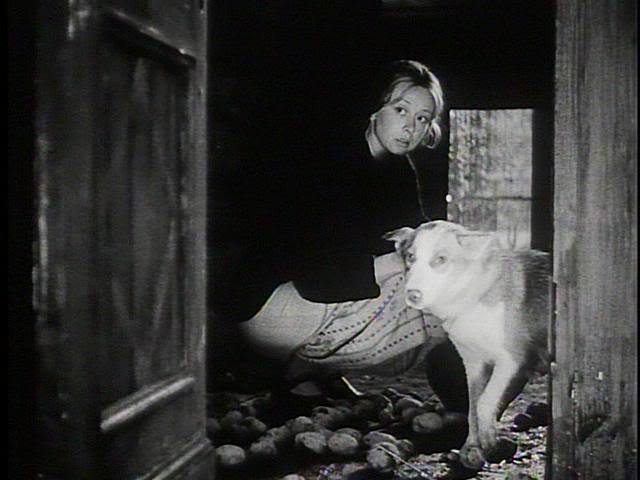
Shot from A. Tarkovsky’s film “The Mirror”.
Music created at the ANS occupies a special place in Soviet cinema. The already mentioned composers work with the synthesizer: Artemyev, Nikolsky, Meshchaninov, Kreichi, Gubaidulina, Nemtin, Schnittke and many others join them. etc.
In Soviet cinema there are many films, famous episodes and fragments, where music or sound effects are created using ANS, for example:

In 1990, a collection of works by composers Alfred Schnittke, Edison Denisov, Sofia Gubaidulina, Eduard Artyomiev and Oleg Buloshkin, created in 1971 at the ANS, was published.
Another surprising fact related to the inventor is interesting. Murzin’s studio was planned to be placed in Scriabin’s house-museum, but the rooms where they planned to do this occupied 10 rooms of a communal apartment. Through the efforts of Yevgeny Murzin, who connected his military and party ties, the families who lived there were resettled in 10 separate apartments, which seemed almost impossible for the year 1967.
In 1970, after a long illness, the creator of the world's first studio synthesizer and first music editor - ANS, Evgeny Murzin died. The studio was headed by his deputy Malkov. In subsequent years, the studio, at first only formally related to the record company “Melody”, gradually came under the full control of this organization. According to the composers who worked there, the loss of independence negatively affected the creative atmosphere.
Today there are several computer ANS emulators, for example virtual ANS:
Evgeny Aleksandrovich Murzin was buried at the Vvedensky cemetery, a modest granite obelisk is located on the grave. Despite a significant contribution to the development of revolutionary technical approaches, the ideas of creative freedom and the creation of synthesizers, the name of Yevgeny Murzin is rarely remembered at home and practically does not know abroad.

The 70 years that the USSR lasted is a complex and controversial period, which, meanwhile, is rich in amazing stories of inventions and discoveries. In acoustics and music there were no fewer such inventions than in heavy industry and the military industry, although the latter were much less known. One way or another, I am deeply convinced that the ambiguous attitude towards the Soviet period in the history of our country should not detract from the significance of the inventions of Soviet engineers.
In this material, the story of a talented military engineer who, contrary to a huge number of circumstances, created the world's first studio musical synthesizer. This post is about a man who, for the sake of his beloved invention, refused general epaulettes and related benefits. In a sense, this concise biography is dedicated to the endangered type of people who, in the harsh Soviet reality, managed to create unique equipment, open new horizons, were able to circumvent bureaucratic, ideological and other obstacles.
Today, any article about the history of synthesizers can not do without mentioning such names as Robert Mug, Ray Kurzweil, Milton Byron Babbitt, while Eugene Murzin is not rarely forgotten or only mentioned in passing. That is why we devote the second article of the cycle about the history of synthesizers to this person.
The beginning of the “Samara nugget”
Evgeny Murzin was born in 1914 in Samara. After graduating from high school, the ambitious son of a weaver enters the Samara Construction College, which he graduates with honors in 1933. At this young age, Murzin becomes a music lover and shows great interest in classical music. The inquiring mind of an excellent student of the Samara technical school requires more than secondary specialized education and in 1933 Murzin entered the Moscow Institute of Public Utilities Engineers. After graduating with honors in 1938, Murzin continues his studies at the graduate school of the institute.

According to the testimony of Murzin’s daughter, already in the late 30s the inventor had the idea of creating a synthesizer. In 1936, the music lover Murzin got acquainted with the works of Alexander Nikolaevich Scriabin, and already in 1938, a synthesizer project called the ANS appeared in honor of the great composer. After graduating from graduate school in 1941, Murzin with his project turns to the Moscow Conservatory. The idea of the young inventor impresses the leadership of the conservatory, but due to its resource consumption, the creation of a prototype synthesizer does not receive support.

Unlike many inventors, Murzin, by virtue of proletarian origin, and, probably, his youth, avoided getting into the meat grinder repressions. Unlike, for example, Theremin, the inventor did not have to try the camp baland and work in the cramped conditions of Soviet sharashka. Another interesting feature is that Murzin himself at the time of creating the synthesizer project was not a radio engineer, had neither sound engineering nor music education.
Military genius with dreams about the prospects of electronic music
Perhaps an energetic engineer could achieve approval of his development back in 1941, but the Great Patriotic War began, which for a long time delayed the implementation of the revolutionary idea of Yevgeny Murzin.
The engineer has been at the front since 1941, he served in artillery. As a gifted and versatile person, the engineer applied engineering knowledge to develop a project for an electromechanical artillery fire control system, after which he sent the draft invention to the command. Having appreciated Murzin’s innovation, the command recalls a talented engineer from the front and engages in the development of military equipment at NII-5 as a senior lieutenant technician.

According to a friend of Murzin, composer Eduard Artemyev, the inventor said that during the war he had to analyze the features of air combat and the techniques of German pilots. As a result of this study, he was able to develop effective tactical countermeasures for anti-aircraft batteries and Soviet aviators, taking into account the patterned, typical maneuvering of German aircraft during attacks.

During the war, the engineer developed several modifications of anti-aircraft fire control devices, led their tests and launched into serial production. In 1945, at the Moscow State Technical University named after N.E. Bauman Murzin defends his thesis on the specialty of military instrumentation.

Almost all the post-war years, the engineer was actively engaged in the development of equipment for soundmetric reconnaissance of ground artillery, instrumental methods of guiding fighter-interceptors to enemy bombers. For which, according to some reports, in 1951 he was awarded the Stalin Prize. During the difficult 40s, Eugene found time to improve the design of his synthesizer . There was naturally no time left to create a prototype.
A revolutionary synthesizer soldered in a communal apartment
Developing artillery systems, Murzin becomes quite an influential figure, which allows him to find the resources necessary for the development of a synthesizer. There is an opinion that the first prototype of the ANS was developed at the NII-5 itself, however, the stories of relatives and friends of the engineer refute such assumptions. According to everyone who was familiar with the engineer, the prototype of the ANS synthesizer was going to be in a room in a communal apartment in which Evgeny Murzin lived. He was actively helped by soldering his wife and daughter, as well as guests, conversations with whom were often held in a rosin haze.

The inventor’s colleagues at the military research institute ironically called the ANS a balalaika, but understanding the companion’s enthusiasm for a hobby that was strange for that time, they helped to get scarce radio elements. Murzin’s high salary by Soviet standards (who reached the rank of colonel in the 50s) greatly facilitated the work on the prototype of the instrument. Understanding the value of Murzin’s military developments, the leadership of the research institute turned a blind eye to a hobby that was not quite usual for a military engineer, which he himself considered a matter of his life.

Creating a working prototype of the invention, Murzin used his own funds, as well as the help of friends who financially supported the inventor in those cases when his own funds were not enough to purchase the necessary materials, parts and elements.
Short triumph and revenge of Soviet reality
By 1958, Eugene Murzin managed to complete the first prototype of the ANS. Even the first artisanal synthesizer sample had characteristics unprecedented for that time:
576 pure tones covering the range 42-10800Hz, 8 octaves
72-step temperament
4 optical discs, each disc - 144 tracks (2 octaves)
diameters 120-30mm, width 0.31mm
rotation speed: 12, 3, 3/4 , 3/16 rpm
2 recorders of an author's design for recording reproduced sound; a
powerful amplifier, in the tip of which more than 70 lamps are used

In addition, the synthesizer was the world's first polyphonic instrument of this type and implemented the photographic optical principle of reproduction, which has no analogues in the world. We wrote in detail about the principles of the ANS synthesizer in this article .
The finished prototype impressed composers and responsible comrades from the USSR Ministry of Culture. As a demonstration of the technical superiority of the Land of Soviets, the second prototype device with improved characteristics, created already with the active support of the USSR Council of Ministers Committee on Radio Electronics, went to technical exhibitions in London and Paris in 1961.

Composers instantly felt the revolutionary approach to creating music, the synthesizer made it possible to completely exclude the artist from the process of its creation, and draw sound canvases on the synthesizer plates as the author needed. Many prominent composers of that time became Murzin's associates in improving his invention, for example, Eduard Artemyev, Nikolai Nikolsky, Peter Meshchaninov, Stanislav Kreichi.

Artemyev described these events as follows:
“After the conservatory, I had the opportunity to meet Evgeny Murzin and his synthesizer ANS. A stunning impression. A world that I have not heard before ... I understood the intrinsic value of sound, its ability to contain the macrocosm and the microworld. ”
Taking advantage of the support, after the advent of the industrial design of ANS, under the leadership of Murzin, a “central studio of electronic music” is being created.
There is a well-known document drawn up in the Union of Composers regarding the synthesizer and Murzin’s initiative addressed to the Minister of Culture of the USSR Furtseva, here is his text:
Dear Ekaterina Alekseevna!
The State Committee of the USSR Council of Ministers for Radio Electronics completed in 1961 the development of an industrial design of electronic musical instrument - ANS. ()) ANS in the hands of the composer is a means of producing music. (ѕ) To generalize the experience of using ANSs at the Ministry of Culture of the USSR, a central electronic music studio should be created.
First Secretary of the Union of Composers of the USSR T. Khrennikov
First Secretary of the Union of Composers of the RSFSR D. Shostakovich
It is interesting that, at the time of the creation of the laboratory, in 1967, Murzin, as the chief engineer and author of the basic principles of managing active air defense systems, successfully completed a large-scale project that promises him with a continuation of his military career (new position and rank of general) . Despite the bright prospects for career growth, Murzin goes into the reserve and selects his ANS.

Shot from A. Tarkovsky’s film “The Mirror”.
Music created at the ANS occupies a special place in Soviet cinema. The already mentioned composers work with the synthesizer: Artemyev, Nikolsky, Meshchaninov, Kreichi, Gubaidulina, Nemtin, Schnittke and many others join them. etc.
In Soviet cinema there are many films, famous episodes and fragments, where music or sound effects are created using ANS, for example:
- “Diamond hand” - a plastered paw chases after Gesha (Mironov), and then grabs his nose.
- When in “Solaris” a heavy, iridescent buzzing occurs with a crushing sound background, the ocean is worried, nerves are inflated.
- When in “Come Tomorrow” Frosy Burlakova, who has gone crazy from Moscow, faints at three stations.
- When in "Liberation" Hitler is poisoned.
- Soundtracks for Sibiriada and Zerkal are almost entirely created on ANS
- (The list goes on)

In 1990, a collection of works by composers Alfred Schnittke, Edison Denisov, Sofia Gubaidulina, Eduard Artyomiev and Oleg Buloshkin, created in 1971 at the ANS, was published.
Another surprising fact related to the inventor is interesting. Murzin’s studio was planned to be placed in Scriabin’s house-museum, but the rooms where they planned to do this occupied 10 rooms of a communal apartment. Through the efforts of Yevgeny Murzin, who connected his military and party ties, the families who lived there were resettled in 10 separate apartments, which seemed almost impossible for the year 1967.
In 1970, after a long illness, the creator of the world's first studio synthesizer and first music editor - ANS, Evgeny Murzin died. The studio was headed by his deputy Malkov. In subsequent years, the studio, at first only formally related to the record company “Melody”, gradually came under the full control of this organization. According to the composers who worked there, the loss of independence negatively affected the creative atmosphere.
Artemyev talks about it this way: After Murzin’s death, the studio was headed by his deputy Malkov - he had remarkable organizational skills, but he could not get along with people and was not flexible. The studio lost its independence, it was made part of the Melody company, and gradually it lost everything. It is logical that in the absence of initiative, the ANS was never launched into the series.
Today there are several computer ANS emulators, for example virtual ANS:
Evgeny Aleksandrovich Murzin was buried at the Vvedensky cemetery, a modest granite obelisk is located on the grave. Despite a significant contribution to the development of revolutionary technical approaches, the ideas of creative freedom and the creation of synthesizers, the name of Yevgeny Murzin is rarely remembered at home and practically does not know abroad.
